Modified Papilla Preservation Technique (MPPT)
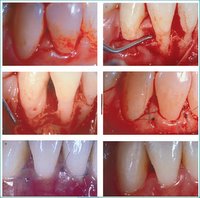 The modified papilla preservation technique(1996). A new surgical approach for interproximal regenerative procedures. A modification of the papilla preservation technique has been applied to achieve primary closure of the interproximal tissue over barrier membranes placed coronal
The modified papilla preservation technique(1996). A new surgical approach for interproximal regenerative procedures. A modification of the papilla preservation technique has been applied to achieve primary closure of the interproximal tissue over barrier membranes placed coronal 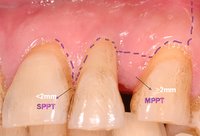 to the alveolar crest. Cortellini et al. study:Fifteen patients with deep intrabony interproximal defects were treated. Defects had a probing attachment level loss of 9.9 +/- 3.2 mm and a recession of the gingival margin of 1.7 +/- 1.6 mm. The depth of the intrabony component was 5.5 +/- 2.9 mm; while the suprabony component was 5.9 +/- 2.0 mm. Titanium-
to the alveolar crest. Cortellini et al. study:Fifteen patients with deep intrabony interproximal defects were treated. Defects had a probing attachment level loss of 9.9 +/- 3.2 mm and a recession of the gingival margin of 1.7 +/- 1.6 mm. The depth of the intrabony component was 5.5 +/- 2.9 mm; while the suprabony component was 5.9 +/- 2.0 mm. Titanium-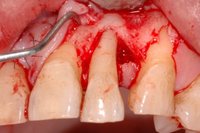 reinforced teflon membranes were placed 1.3 +/- 0.7 mm from the cemento-enamel junction, 4.5 +/- 1.6 mm coronal to the interproximal alveolar bone crest. Primary closure over the interproximal portion of the membrane was obtained in 93% of cases. In 73% of the cases complete coverage of the membrane was maintained until its removal at 6 weeks. These data indicate that the modified papilla preservation technique can be successfully applied to obtain primary closure of the interdental space in regenerative procedures with barrier membranes.
reinforced teflon membranes were placed 1.3 +/- 0.7 mm from the cemento-enamel junction, 4.5 +/- 1.6 mm coronal to the interproximal alveolar bone crest. Primary closure over the interproximal portion of the membrane was obtained in 93% of cases. In 73% of the cases complete coverage of the membrane was maintained until its removal at 6 weeks. These data indicate that the modified papilla preservation technique can be successfully applied to obtain primary closure of the interdental space in regenerative procedures with barrier membranes.J Periodontol. 1995 Apr;66(4):261-6.
Int J Periodontics Restorative Dent. 1996 Dec;16(6):546-59.
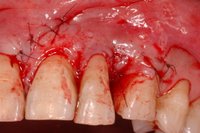
Figure Enlarge>>>
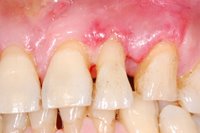




0 Comments:
Post a Comment
<< Home